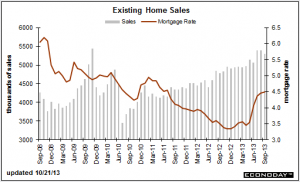The first reports on the New York City area job market since the federal government shutdown showed a mixed picture of the regional economy, with sluggish job growth in New Jersey and a rise in technology and creative-industry positions in the five boroughs.
he data released Thursday showed that New Jersey lost 1,400 private-sector jobs in October, part of a three-month series of reports showing either modest gains or job losses in the private sector since the last time employment was measured, in August, according to the New Jersey Department of Labor and Workforce Development. The federal government shutdown in October caused a delay in jobs and labor force data being sent to state departments of labor.
Weak private-sector job growth could pose a challenge for New Jersey Gov. Chris Christie, who is seen as a contender for the 2016 GOP nomination for president. The state’s unemployment rate fell 0.2 percentage points to 8.4% in October, but that remained well above the national rate of 7.3%. The state’s relatively slow job growth comes amid stronger numbers for the national economy, which added 204,000 jobs in October, despite the turmoil in Washington.
“When you contrast that with what is happening nationally, it’s worrisome,” said Joseph Seneca, a Rutgers University economist, who said the preliminary numbers could be revised upward.
Mr. Christie’s office said New Jersey has added more than 143,000 private-sector jobs since February 2010, which puts it in the middle of the pack among states. Some of the state’s key industries—pharmaceuticals, manufacturing and financial services—have been either stagnant or moving employees elsewhere, economists said.
…
New York state experienced modest private-sector job growth since August, mostly driven by an increase in New York City, where technology and advertising appear at last to be having a noticeable impact on job growth, economists said.
The city added 33,700 jobs between September and October, slightly better than expected based on the historical average, according to the New York state Department of Labor. Advertising and computer systems design both hit near all-time highs in October, while finance jobs grew slightly, as they continued to lag the city’s recovery.
The unemployment rate rose to 8.7% in October from the month earlier in New York City, which has had a stubbornly high rate of unemployment despite strong job growth.
Officials in Mayor Michael Bloomberg’s administration have argued that is because more people have either re-entered the workforce or come to the city seeking work as the economy has strengthened
Connecticut, which has lagged both New York and New Jersey, added 1,000 private-sector jobs in October. The state’s unemployment rate decline to 7.9% in October from 8.1% in August.
“The September and October reports are sending mixed signals about Connecticut’s labor markets,” said Andy Condon, director of the office of research at the Connecticut Department of Labor. “The weeks leading up to the federal government shutdown, evidently, led to increased economic uncertainty and hiring indecision across the state.”

